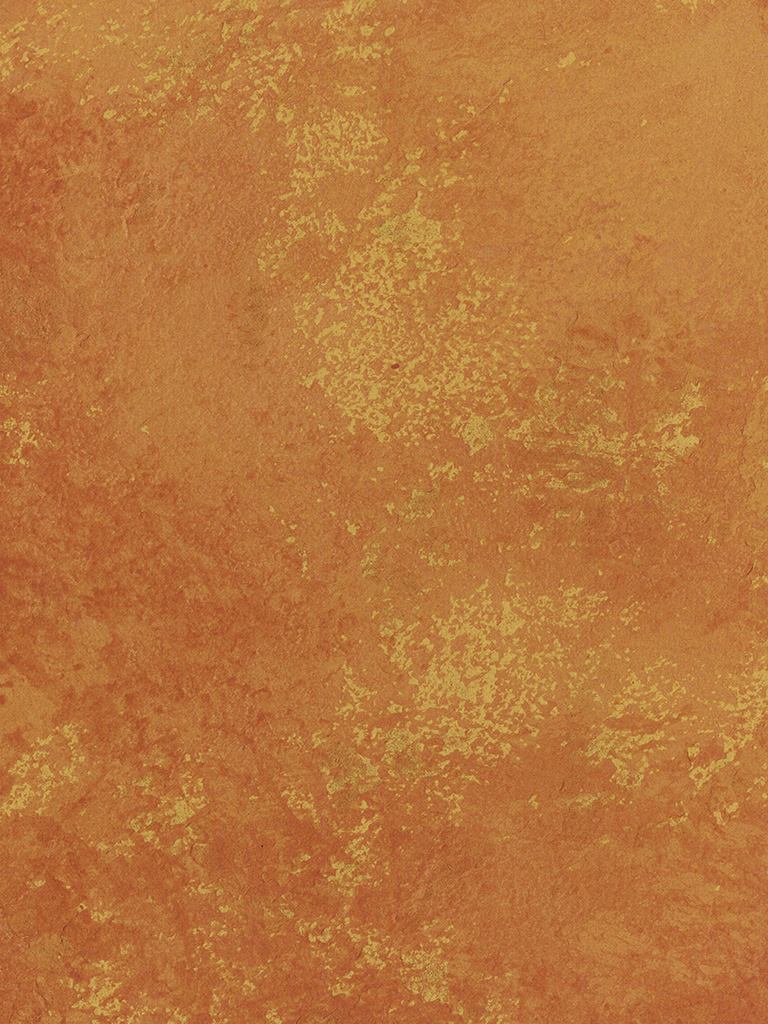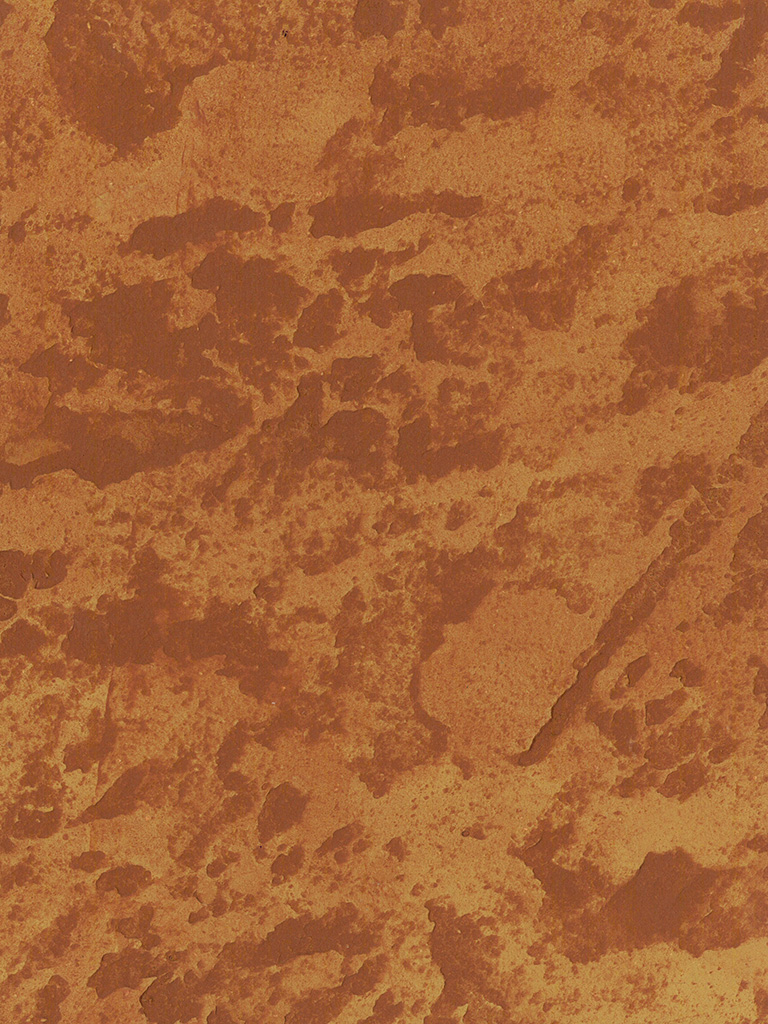Instructions
Rust look
Rough Rust" shade
Walls with a rust look look very similar to an oxidized iron surface – which makes the warm tactile sensation all the more surprising when you touch them. A rustic style that can be used in both urban and rural living environments.
The look can be implemented in several color variations.
Auro products
Recipe for "Rough Rust" shade
1st order
- 10 l clay decorative plaster no. 311
- 2 l solid and tinting paint no. 330-10 (ochre-yellow)
2nd order
- 1 l tinted wall paint, shade no. 500 (mixing ratio: 2 x 0.5 l solid color and tinting paint no. 330-10 (ochre-yellow) and 0.14 l solid color and tinting paint no. 330-32 (English red)
- 4 l wallpaper paste no. 389 mixed with water (1:40)
Further materials
- Venetian trowel, 150 grit sandpaper
- Drill with stirring attachment, empty bucket, water
Step 1
1. order:
The mixture made from clay decorative plaster and full-tone and tinting paint is applied very thickly with a roller or trowel. First apply approx. 1-2 m² (consumption approx. 750-1000 ml per m²).
Step 2
Then "smooth" the surfaces with a Venetian trowel or a plastic spatula. Then dab the trowel into the fresh material, always directly next to each other or slightly overlapping. Do not leave any gaps.
Step 3
The tips and bulges of the "churned up" structure are then smoothed out again slightly with feeling to create the desired structure. Depending on your taste and the desired effect, you can smooth more or less strongly.
Step 4
The edges and bulges, which are still very noticeable when wet, will have shrunk and become much smaller after drying (approx. 24-48 hours). During intermediate sanding with approx. 150 grit sandpaper, excessively raised edges are slightly smoothed, but not sanded away.
Step 5
2nd order:
The mixture of solid and tinting paint and wallpaper paste is rolled on thinly or spread with a spatula (consumption approx. 100 ml per m²). Do not apply more than approx. 1 m² at first.
Step 6
The applied paint is then removed quickly with a Venetian trowel or a plastic spatula in a sharp criss-cross pattern. Any excess material must be removed.
Step 7
This is what the finished "rust surface" looks like. The darker shade of the 2nd coat remains in the recesses.
More info
The instructions for these and other creative wall design techniques can be found in this brochure.



